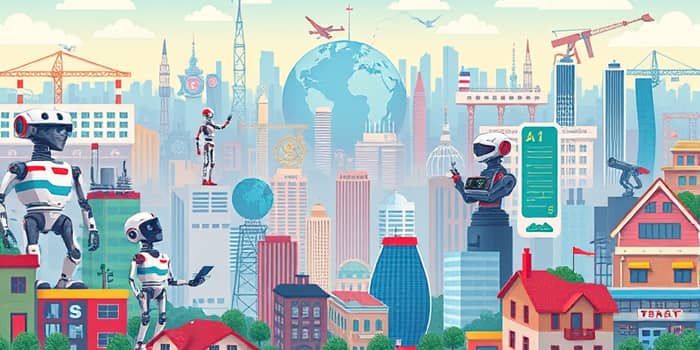
From assembly lines to operating rooms, from trading floors to living rooms, the synergy between robotics and artificial intelligence is transforming every facet of our world. As these technologies mature, their combined impact accelerates innovation, productivity, and societal change.
The global AI market is projected to reach $243.72 billion by 2025, growing at a staggering 23 percent CAGR since 2023. Beyond size, its influence permeates every corner of the global economy, adding an estimated $15.7 trillion to GDP by 2030. Over half of that boost will come from productivity gains, as intelligent systems streamline operations and unlock new efficiencies.
Meanwhile, the robotics market is racing ahead. With revenues expected to hit $50.8 billion in 2025 and climb to more than $372 billion by 2034, robotics already accounts for about 14.8 percent of all AI-related revenue. These figures speak to a future where mechanical and cognitive technologies converge seamlessly.
At the heart of this transformation is manufacturing. In 2025, over 555,000 industrial robots are projected to be installed worldwide. Asia-Pacific leads the charge, generating $4.26 billion in industrial robotics revenue as factories deploy machines that never tire and perform with unwavering precision.
One of the most exciting developments is the rise of cobots—collaborative robots that work hand-in-hand with human operators. Post-pandemic expansion has seen cobots deployed in warehouses, automotive plants, and medical supply chains. Yet automation’s flip side must be addressed: the displacement of up to 20 million manufacturing jobs by 2030, prompting calls for targeted reskilling and transition policies.
In operating theaters around the world, AI-assisted robotic surgeries grew by 40 percent year-over-year, with over 800,000 procedures performed annually by 2025. These systems offer unmatched precision, reducing recovery times and complication rates.
The AI healthcare market itself is on track to reach $71.5 billion in 2025, supported by more than 1,200 FDA-approved devices across cardiology, ophthalmology, and neurology. In medical imaging and diagnosis, AI generates $7.6 to $8.1 billion in revenue through advanced image recognition and interpretation.
The fintech sector is embracing AI at breakneck speed. By 2025, the market will be valued at $42 billion, with robo-advisors managing $1.3 trillion in assets for 32 million users. Meanwhile, algorithmic trading racks up $6.4 to $7.5 billion in revenue, executing thousands of trades per second based on complex predictive models.
Customer service in banking has been revolutionized too, with 71 percent of customers interacting with AI chatbots for inquiries and routine transactions. These virtual assistants reduce wait times, personalize experiences, and free human agents for higher-value tasks.
Beyond factories and hospitals, robotics is entering our homes. The service robotics segment will account for over 75 percent of global robotics revenue in 2025. Consumer favorites like robotic vacuum cleaners and companion bots fuel a $24.5 billion market, growing at 27 percent annually.
At the same time, virtual assistants—Siri, Alexa, and Google Assistant—handle more than three billion voice queries per day, making AI an invisible yet indispensable part of daily life.
AI-driven use cases are generating immense value across industries. From navigation systems guiding autonomous vehicles to predictive maintenance in manufacturing, these applications form the backbone of modern operations:
Generative AI is capturing a growing share of investment—35 percent of total AI funding in 2025—spawning creative and multimodal models that design products, write code, and generate art. Vertical AI, tailored to specific industries, has attracted $47 billion in funding for legaltech, edtech, and healthtech solutions.
The AI hardware market, including edge computing devices, is expected to reach $78 billion in 2025, while AI-as-a-Service platforms grow to $46 billion. As cloud-based AI deployments account for 60 percent of enterprise projects, organizations can access powerful algorithms without massive upfront investment.
Automation’s dual nature is clear: it risks displacing 83 million jobs by 2025, yet it is set to create 97 million new roles in data science, AI oversight, and robot maintenance. In the United States alone, AI-related job openings reached 1.5 million in 2025.
Addressing these shifts requires robust policy frameworks, public-private collaborations, and a commitment to lifelong learning. Only then can we ensure that the workforce evolves alongside the technologies that reshape it.
As we look ahead, the fusion of robotics and AI promises not only to optimize processes but also to unlock new opportunities for creativity, collaboration, and collective progress. By harnessing these technologies responsibly, we can build a future that benefits businesses, workers, and society as a whole.
References





